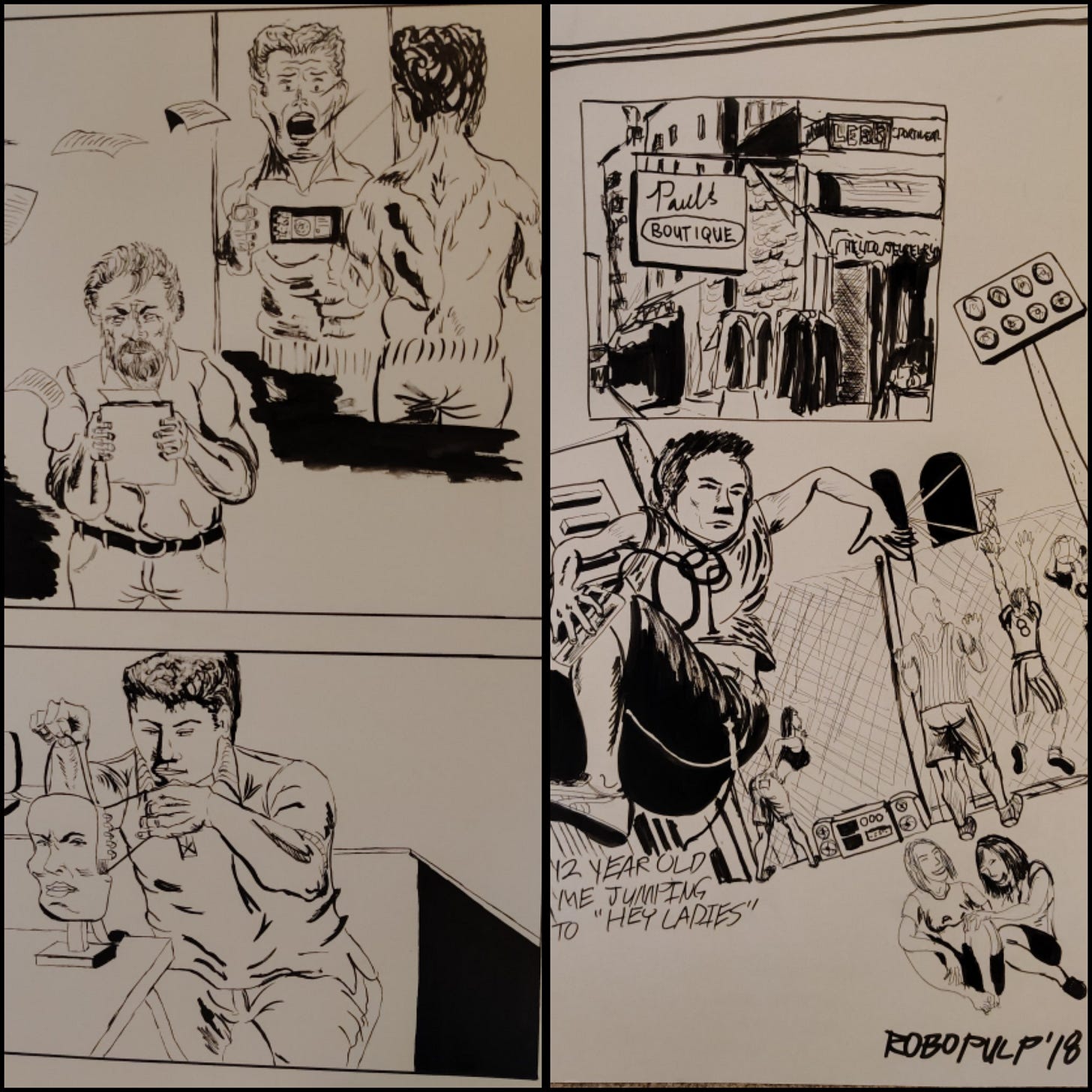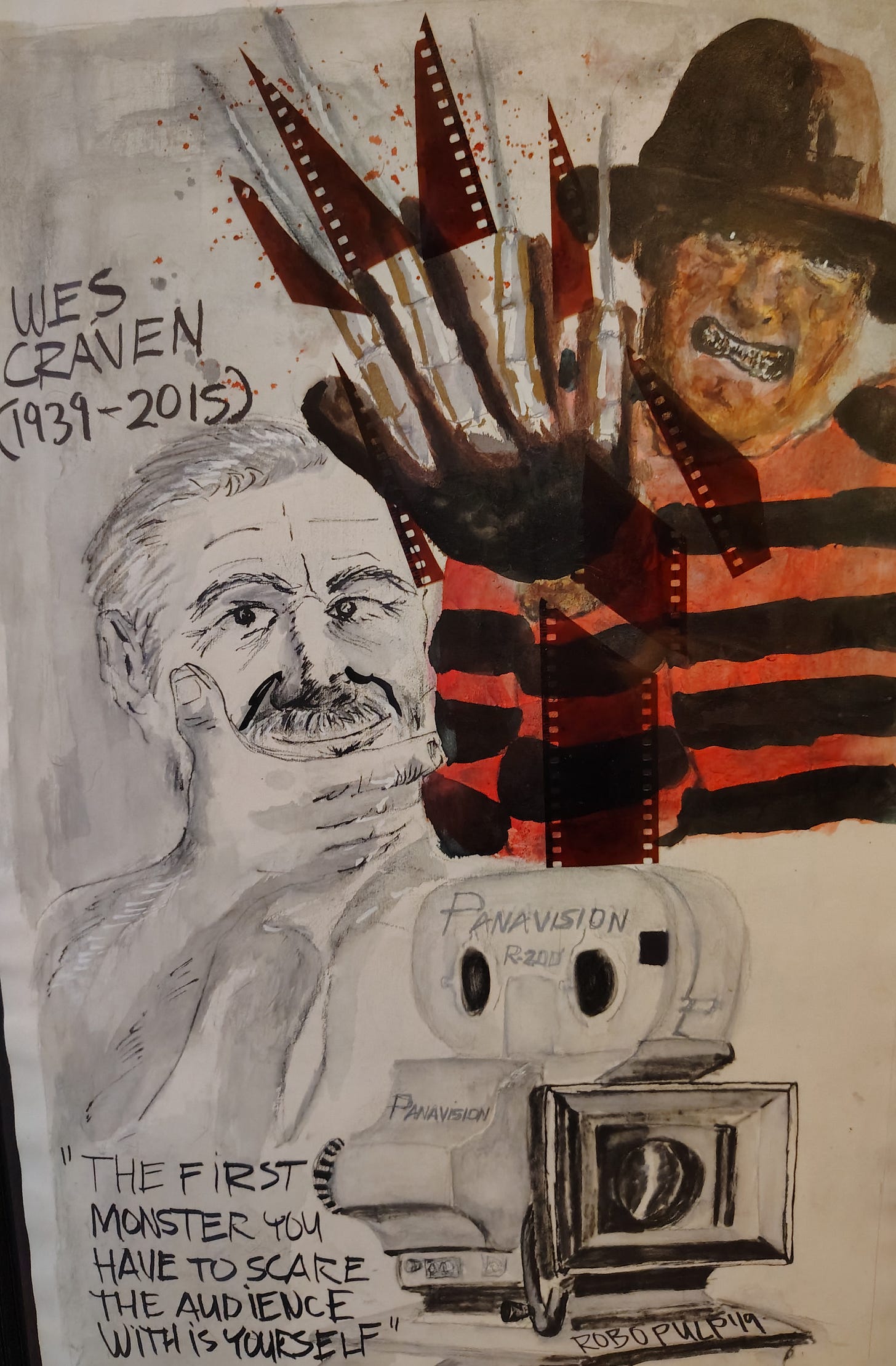My drawing practice had more focus now, but the enthusiasm was waning again.
I had started supplementing my drawing practice with reading content on personal growth. I learned many things about myself, among them that I was a people pleaser.
I would put my own needs below the needs of others.
I’d been doing this long enough that it had a become an ingrained habit, to the point that I had smothered my own needs. I wrote in part 1 and part 2 of this series how I carried on doing things longer than I should have before finally stopping and questioning what I was doing.
The simple act of self analysis and pivoting on strategy was alien to me. Self analysis as a form of self care to prevent me from doing things in an automatic way without awareness. Where before I would try harder in the daily drawing practice, I started reading more on what awareness was.
Where the idea of applying mindset had been alien to me before, the studying was causing awareness to simply align itself to the daily practice of drawing.
Awareness was telling me I didn’t have to quit. I just had to understand my personal motivators.
With the degree of awareness I had developed, I knew it was time to stop and reflect.
The motivation to draw wasn’t entirely gone, but it had dropped.
I had done a few pages of comic art to both practice and try out ideas. Pages with scenes of action and dialogue not connected to a larger narrative. A simple creative exercise to jumpstart more scenes. Looking the pages over, I deduced a few things:
I wasn’t a great artist, but I did have an instinct for graphic layouts. (I can communicate actions on the page through effective panel layout.)
Great art is not a prime requirement to making comics. Striking a balance between aesthetics and clarity of storytelling is the desired effect.
Printing comics and attending comic cons are expensive undertakings. It’s more sensible and cost efficient to learn to leverage the internet and digital tools first.
Where before I would have practiced harder, now I asked myself what inspires me to create?
Storytelling.
To tell a story in a medium that was at once static, yet highly dynamic within the structure of still images within panels arranged on a page.
But what inspired me to create comics?
I had identified two particularly strong influences in the work of Ashley Wood and Hugo Pratt, but there was a third influence I wasn’t aware of that nagged me at the edges of my consciousness. In the same way you look at world in front of you, while undefined things dance at the edges of your peripheral vision, to vanish when you stare at them directly like collapsing particles.
Nothing came to mind so I let it go. A few days later I was at a local cafe, and while sipping my coffee and studying the French and Italian banners of foreign cafes, I had it.
Commercial graphic design.
The simple, effective design of banners, flyers, and movie posters had been quietly influencing my page layouts.
I remembered the times I’d been to Boston or New York, riding the trains and critiquing the effectiveness of the banners on the trains cars in selling their product.
And again, I was being led by a creative guiding impulse to do things that were not standard practice in the comics publishing industry.
It took a little more time for what I was doing to fully reveal itself to my conscious mind. At the moment I simply was compelled to do things in a certain way.
My brand.
The graphic novel still wasn’t coming together, but from the mock page layouts I’d been doing I got a few ideas I made into short stories.
The pages came together fast, and though improved craft was part of the reason, the greater reason I was producing pages of comic book art quicker was a quiet assurance that had come over since I started giving in to the unknown impulses I’d receive whenever I reached a sticking point.
I stopped resisting.
And started just doing.
I stopped second-guessing myself.
This was something that went beyond craft and practice. It was about developing confidence that I could make comics.
It was about giving myself permission to do what I craved to do without waiting for approval from a non-existent art teacher.
As a people-pleaser, or a nice guy, constant subjugating of my own desires left me in a place where I resisted doing the things that pleased me.
Along with learning to create comics I was also learning to place my own desires first.
And what I desired was to make comics in a way that was unrestrained.
To make comics with the ethos of punk rock.
Raw, aggressive, with an unfinished feel.
I didn’t know where the source material for this would come from.
I knew I’d figure out from the short pieces.
I kept going, excited to know I’d combined a signature style to the craft of making comics.
Of which I’ll tell you about on the next installment.
But I’ll leave you with a few samples of what I did after I left the study phase and started the practice.




Thank you for sharing your journey as an artist and as a human! Being inspired to write your own story without editing yourself to other’s standards is an ongoing fight but one we must win.
Giving yourself permission to just do, without overthinking or waiting for someone else’s approval, is tough but so necessary. Can’t wait to see where you take this next Jay.